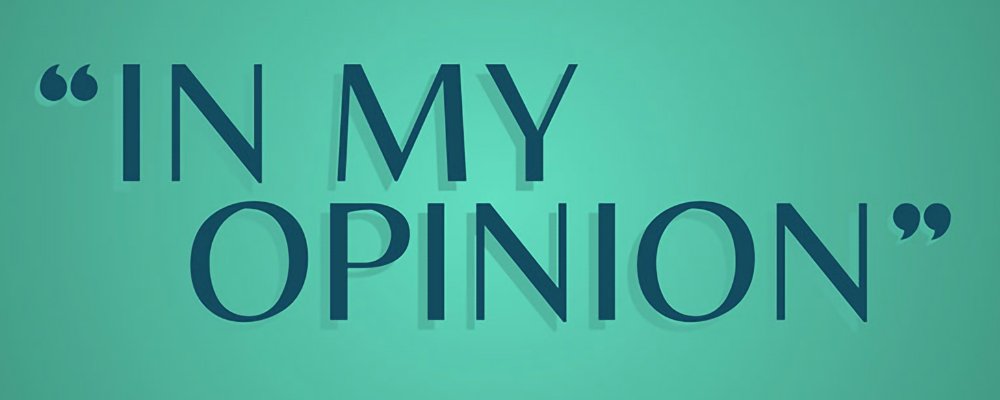The neo-cortex is the largest part of the human brain and is associated with various higher-order cognitive functions, including memory, language, and complex thinking. Emotions are closely tied to the limbic system, but they also influence the neo-cortex. I think that when telling stories in a business context, appealing to emotions can make your story more engaging and relatable, as emotions often drive decision-making. Emotionally resonant stories are more likely to be remembered and can influence customer behaviour.
It all depends
““The price of originality is criticism, and the value of originality is priceless.””
This quotation suggests that when individuals or ideas are original and innovative, they often face criticism and resistance from those who are more accustomed to the status quo. When in fact the value of originality, in terms of the positive impact it can have on the world, on creativity, and on progress, is immeasurable and truly priceless. Therefore, I think the quotation emphasises the importance of persevering through criticism to achieve the benefits that come with being an original thinker or creator.
The rhythm of loyalty
Marketing often involves embracing counterintuitive approaches, and one of the challenges in marketing is the necessity to incorporate elements that defy conventional logic. It's essential to continually test unconventional strategies, as your competitors may not be doing so. Rather than immediately altering the core reality of a product or service to enhance consumer perception, consider the intricate layers that shape how people perceive, interpret, and emotionally connect with that offering. I think the process is multifaceted, involving the objective essence of a product, the context in which it's placed, the perceptions that arise from that context, the emotions or meanings derived from those perceptions, and the emotions ultimately driving consumer behaviour. Unlike the neat and predictable mappings seen in physics, human behaviour encompasses a more complex, non-linear journey through several stages. One has to recognise and harness the complexity of human behaviour and perception can be a key to successful marketing, even if it requires embracing counterintuitive strategies.
All that glitters is not gold
Optimism is essential to achievement and it’s also the foundation of courage and true progress. I think optimism can be a powerful driving force that motivates individuals and leaders to take risks, overcome challenges, and work toward their objectives. While optimism is crucial, leaders must also be grounded in facts and reality. Blind optimism without considering the practical aspects and potential obstacles can lead to poor decision-making. As an authentic leader it’s important to remember to balance this optimism with facts and reality.
““Knowledge is having the right answers.
Intelligence is asking the right questions.
Wisdom is knowing when to ask the right questions.””
Social cognition
Alexander Todorov, psychologist at Princeton University is known for his research on social cognition and the psychology of first impressions. He has conducted studies that suggest people make snap judgments about trustworthiness in a very short amount of time, often within a tenth of a second, or even less. These rapid judgments are based on facial cues, body language, and other nonverbal signals. Todorov's research has shown that once we make these initial snap judgments, we tend to stick with them and use subsequent information to confirm or support our initial impressions, rather than revising them. I think this phenomenon is related to the concept of confirmation bias, where individuals tend to seek out and interpret information in a way that confirms their pre-existing beliefs or judgments. Remember that these quick judgments are not always accurate, and people can make mistakes in assessing trustworthiness based on minimal information. Todorov's work highlights the importance of being aware of these cognitive biases and being open to revising our judgments when presented with new and more reliable information.
Second-guessing
Imposter syndrome is a feeling that many people experience at some point in their lives and can be described as having these three main elements to it:
1. The belief that other people have an inflated view of your own abilities or skills, a far more inflated view that you have of yourself.
2. You have this intense fear that you’ll be found out and exposed as a fake.
3. You consistently attribute your success that you do recognise, to other factors outside of your own abilities and talent.
Contact me via e-mail to arrange a confidential meeting.
Articulate a perspective
Leadership is fundamentally about serving others, fostering trust and loyalty through a commitment to the greater good. I think the true essence of leadership lies in service, self-discovery, and self-esteem. And in my experience I have found that effective leaders begin with a deep understanding of themselves, recognising their strengths, weaknesses, values, and beliefs. Healthy self-esteem also plays a vital role, bolstering a leader's confidence and ability to inspire and motivate others. Therefore, understanding oneself by mastering one's own thoughts and actions is essential and ultimately leads to an effective and influential leadership style which benefits both executives and organisations.
Good, better, best
Image © Maria Hergueta for Harvard Business Review
I think in the age of mass marketing, well-promoted average products or services consistently outperform their counterparts that lack extensive promotion. The key lies in crafting a compelling story that resonates with our target audience in an inspiring and persuasive manner which will encourage them to share it with others. If we can achieve this then we have done a good job of effective marketing.
““It’s not the story that you tell, it’s the story that you sell that really makes all the difference.””
Responding with dignity
I recently attended a leadership lecture at Copenhagen University, and said, "You cannot have imagination free decision making" as it suggests that decision-making and imagination are not independent of each other. I think imagination often plays a role in decision-making, as it allows individuals to envision different scenarios, possibilities, and outcomes related to a decision. However, it's important to note that while imagination can influence decision-making, individuals still have the capacity to make decisions that are not solely dictated by their imagination. The lecturer pushed back with “Decision-making can also be guided by rationality, logic, past experiences, and external factors, depending on the context and the specific decision at hand. So, while imagination can be a valuable tool in the decision-making process, it does not necessarily restrict or eliminate the possibility of free decision-making.” I guess we were both right…
The desire to belong
The desire to belong and the significance of social connection are deeply rooted in human psychology, reflecting our evolutionary history and the importance of group cooperation for survival. Research using brain scans has revealed that social rejection can trigger brain activity similar to physical assault, particularly in regions associated with processing physical pain. This overlap in neural response underscores the emotional impact of social exclusion, evoking feelings of loneliness, sadness, and, in severe cases, depression. I think the human brain's strong response to the threat of rejection is linked to our primal fears of isolation and exclusion.
On the positive side, social connection and a sense of belonging are known to have a beneficial impact on well-being, providing emotional support, a sense of purpose, and even improving physical health. The individual and cultural variations in the strength of this need to belong and the resilience to social rejection underscore the complex nature of human social psychology. Recognising these findings has societal implications, emphasising the importance of creating inclusive communities, fostering social support networks, and addressing social isolation to promote overall well-being and societal cohesion. Are you feeling alone? Contact me via e-mail for discreet 1:1 meetings.
If I had the key
Senior executives require specific knowledge to effectively carry out their roles, for example, they need to know both how to create exciting, profitable new ideas for their business and how to implement them. In other words, they need both intellectual and practical knowledge. I think they need a combination of intellectual insight and practical skills.
Business operations today are focused on enhancing efficiency by optimising processes that may no longer be relevant in the present. This often involves analysing historical data to identify cost-saving opportunities and efficiency enhancements. Unfortunately, this approach frequently leads to a narrow focus on cost reduction, with the finance department receiving accolades for these efforts while escaping accountability for missed opportunities.
There's no easy route
Standard economic theory envisions individuals endowed with perfect information, complete trust, and consistent preferences while possessing a complete understanding of their utility functions. In other words, they possess clear knowledge of their desires, their willingness to invest, and a deep-seated trust in their potential sellers. Many economic models build upon these foundational assumptions, and these models operate under the notion that the sole avenues to enhance a product's appeal involve reducing its cost or expanding its functionality. I think that we have allowed economists to create a culture in which business makes the same assumptions that dictates the only means to enhance value is through efficiency improvements. However, reality teaches us otherwise, value creation can also arise through the establishment of trust, by telling a story which frames the price of the product or function of the product in a new enlightening and more motivating way or selling it in such a way that fosters confidence in the consumer's decision.
What's happening?
As human beings we have two insatiable needs:
1) A desire to feel significant, and
2) The yearning to be truly understood
One of the psychological shortcuts that I use from years of experience is my trustworthiness is in equal parts empathy and expertise, conveying a message that says, “I understand you and I know what I’m talking about.” I know that it’s impossible to fully understand someone else’s experience nor can I emphasise their importance enough. People want to know that you get them or at least you are trying to get them, and if you are attempting to make the effort to step into their shoes then people will give you grace.
I think our natural disposition as human beings is self-centred, we are all wired to focus on our own needs and desires. However, the most effective way to craft meaningful communication is to change our perspective towards empathy for others. As when we are thinking about others, we are not getting that dopamine rush of self-importance and significance. Therefore, the choice of words we employ is a tangible reflection of our understanding, and when we demonstrate that we "get" someone, or that we're sincerely trying to, we begin to unlock the doors of trust. And in doing so, we signal to others that we respect and value their viewpoint, ultimately forging deeper and more meaningful connections. Contact me via e-mail for 1:1 sparring and coaching sessions.
Embracing change
Embracing change is often a daunting prospect for most of us, as the devil you know is better than the devil you don’t know. Despite our professed commitment to concepts like continuous learning, agility, and adaptability, we inherently resist change. This becomes evident when engaging in sales discussions, where customers meticulously evaluate the value of altering their current practices, often dismissing it as a hassle and too risky. In my experience, I have seen then when potential customers are in a completely dysfunctional situation where their world is falling apart, they will choose status quo over change. My primary goal is not to force change upon them but to encourage them to at least consider it. While I may not always succeed in selling them on change through my services, I attempt to move them one step closer and make the idea intriguing enough to invest their time in exploring further.
Mastering the elements
Here are five important components of a business story:
1. A sequence of related events
The narrative should unfold in a logical sequence of interconnected events, and this structure keeps the audience engaged and allows them to follow the story with ease.
2. A time and place marker
Clearly specifying when and where the story unfolds is crucial, as this provides context and also helps to establish a connection with the audience, making them more receptive to the story.
3. A central character
A well-defined central character serves as the anchor of the story, and this character should be relatable and engaging, helping the audience connect with the narrative on a personal level.
4. A surprise
To maintain audience interest, introduce an unexpected twist or unpredictable event, as this element adds an element of intrigue and keeps the audience eager to know what happens next.
5. A business point
Every business story should convey a clear and relevant message or lesson, and this could be a strategic insight, a moral, or a takeaway that aligns with the objectives of the narrative. The business point is what makes the story not just entertaining but also instructive and valuable.
I think by weaving these five components together effectively, you can create a business story that captivates your audience, making your message more memorable and impactful. Contact me via e-mail to arrange a meeting about your business storytelling sequence.
Your words are selling you
I think effective communication is crucial, whether spoken or written. When you're speaking, it's your responsibility to ensure your message is delivered effectively and this holds true not only for salespeople but also for sales managers and company leaders. This is because what you say will be shared, forwarded, and copied, therefore, it's essential to craft a well-structured narrative. This way, your message can be easily understood in the moment and remembered when shared with others in your absence. Your written communication should also be compelling enough to sell your ideas when you're not present.
In a coherent way
Effective communication is a valuable skill, especially in sales, where competition is fierce, and every word can make a difference in closing a deal. When you're in a competitive sales environment, it's essential to focus on creating a strong value proposition, highlighting the unique advantages of your product or service, and tailoring your message to meet the specific needs and pain points of your potential customers. I think the winning margin in competitive sales often comes down to understanding your customers and effectively communicating the unique value your product or service provides.
““When people are presented with the alternatives of hating themselves for their failures or hating others for their success, they seldom choose to hate themselves.””
From the heart
In my opinion, you don’t have to ask for respect as respect is something that is earned. I do lots of charity work and I do it because I want to do it, I don’t do it to gain media attention. I do so many things where I am in the background as I don’t need the external validation because I do it from my heart. I see other people doing things and everything is on their social media platforms, I do it because I want to do it, not because of building my personal brand or image.
The Learning Pyramid
The Learning Pyramid is framework that identifies the seven methods of learning, and the effectiveness of each method in terms of knowledge retention. In the illustration you can see that the lower effectiveness percentages are assigned to the passive learning methods like lectures and reading, while the significantly higher percentages are attributed to active learning methods such as group discussions and hands-on practice. These percentages were borne from extensive research by the National Training Laboratories Institute.





















